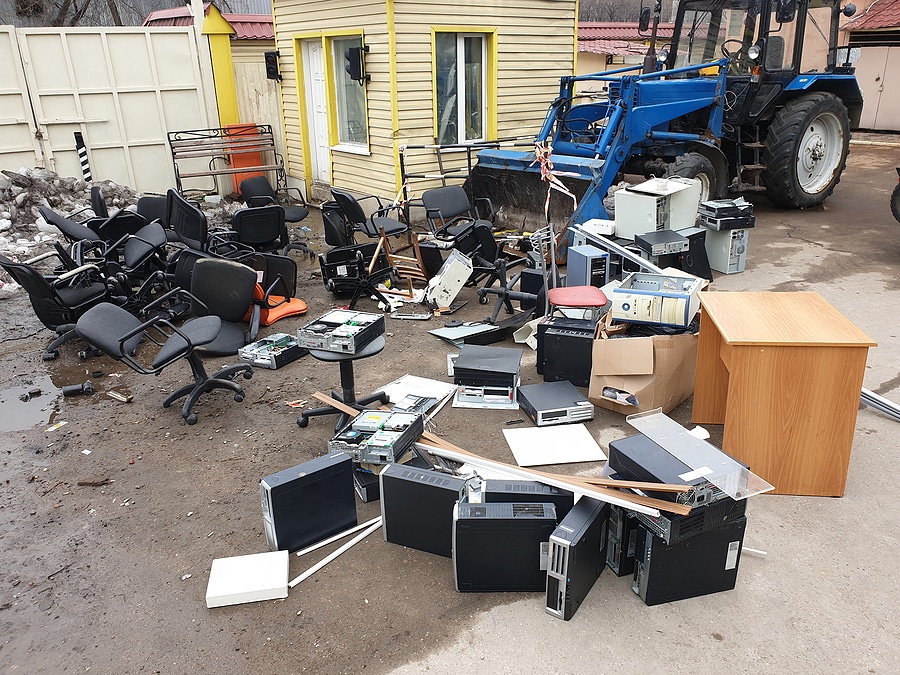eWaste Laws: 5 Things to Know About Disposing of Office Electronics

According to the United Nations, somewhere between 20 and 50 metric tons of eWaste are disposed of annually. And, while eWaste only accounts for around 2% of garbage in US landfills, close to 70% of it is toxic.
So how can North Dakota offices and businesses properly dispose of their eWaste without worrying about the sensitive data and other information the devices may contain? Below are five things to know about disposing of office electronics.
- Laws Vary by State
Like many other laws in the US, the specifics of eWaste laws and recycling vary from state to state. While North Dakota doesn’t officially have anything in the books, the legislation could make its way through the system for approval anytime. And in some cases, such as with potentially toxic waste, everyone must follow federal laws in place.
- Hazardous Materials
Almost all electronics contain components that require certain metals and chemicals to operate, such as lead, mercury, beryllium, and cadmium. While having these materials within the devices is not harmful, they can slowly seep into the ground and water supplies if they are not disposed of properly.
For that reason, everything from cell phones to desktops to copiers cannot simply be thrown in the trash—they must be broken down and separated properly by a certified company. In many cases, a large portion of the materials can be reused rather than completely thrown away, which helps keep hazardous materials out of landfills.
- Donate and Recycle When Possible
One great way to ensure hazardous materials don’t end up in the wrong place is to look into donating or otherwise recycling old office equipment. Even machines that are broken down or need new parts may be useful to someone else. Check with local charities and other organizations that may benefit from receiving the equipment. You can also contact your city directly and ask them for assistance.
- Digital Cleaning Is Important
Whether your office equipment is destined for a second life somewhere else or is taking its final journey to the great beyond, just loading it on a truck and calling it a day isn’t enough. Before any office equipment leaves the building, it must be completely wiped of any sensitive data.
Usually, the easiest way to do this is to format the device back to its factory settings. However, this doesn’t always do the trick, so ensure you follow correct procedures for whichever device you’re disposing of, such as encrypting it before formatting it. With some data, like patient, client, or employee records, HIPAA laws will also need to be followed accordingly.
And as always, make sure to create backups of any files onto a new device before starting the formatting process.
- Have a Policy in Place
Instead of starting from scratch every time a piece of office equipment needs to be disposed of, create an electronics disposal policy for everyone to have. That way, everyone knows what to do or who to contact when the time comes to get rid of an old printer or trade-in for a new laptop. Even though the techies are usually the ones to handle all this, it helps when everyone in the building knows the procedures.
Contact SEAM for Assistance
If you’re still unsure of what you should dispose of (or how), you can reach out to SEAM for more information. As a computer/hard drive recycling and data destruction company in North Dakota, we can get you the details you need and help make the process smoother.
SEAM provides IT recycling and data destruction services including onsite shredding and hard drive wiping to South Dakota, North Dakota, Minnesota, Iowa, and Nebraska.
Schedule a pickup or contact us for more information.





